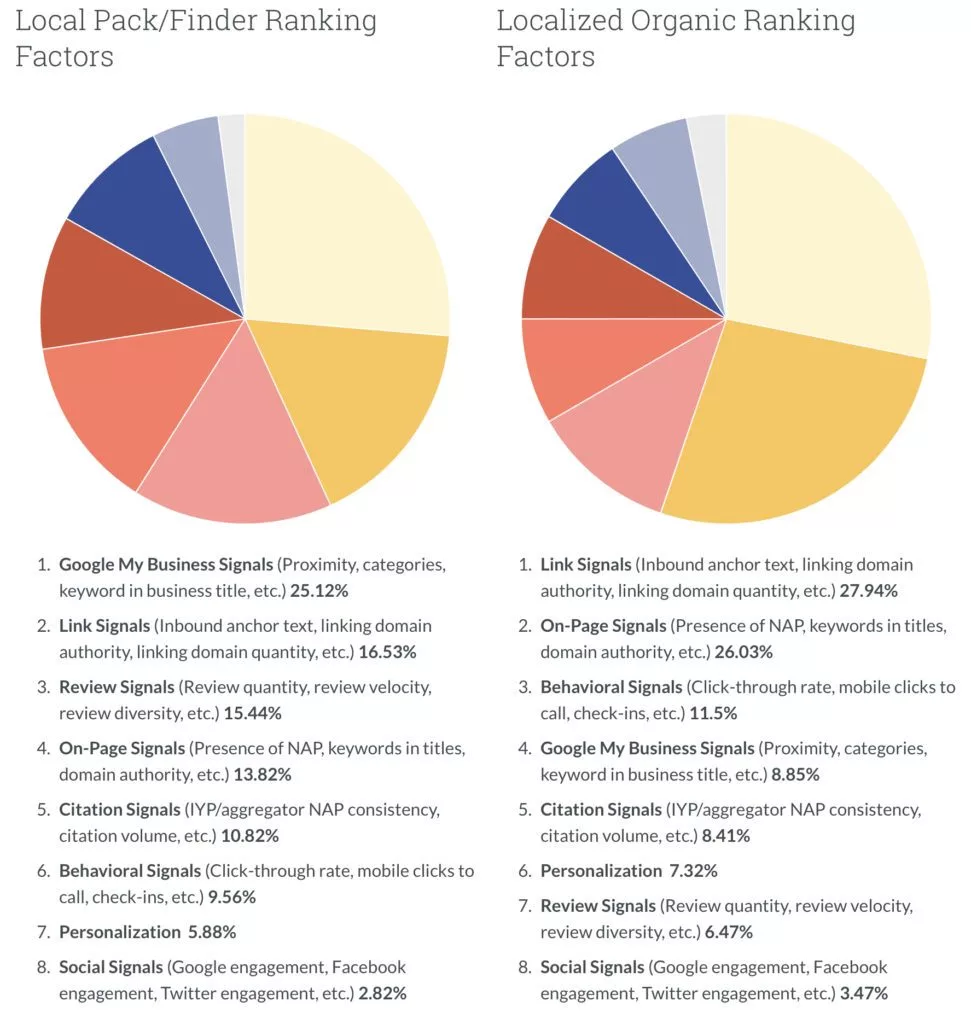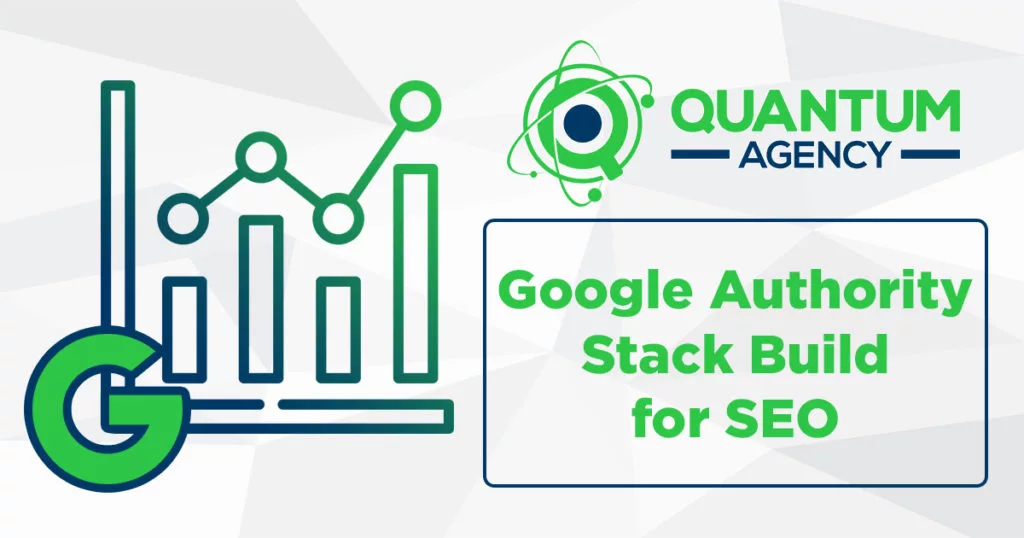Benefits of a Google Stacking strategy using Google Entity Stacks
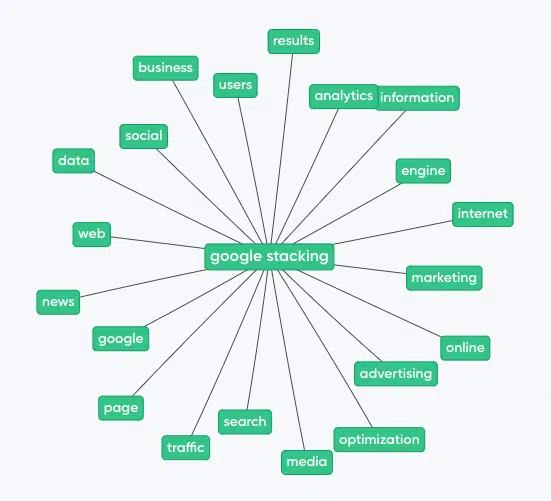
At Quantum Agency, one of our proprietary products is a custom build of a “Google Entity Stack” for brand entity authority link-building purposes in our business marketing SEO services for white-label customers. We build Google asset stacks, aka Google stacks, aka Google cloud stacks (Google app products like Google Docs or Google Sites), ultimately for better SEO rankings but to get better rankings, we have to build the domain authority and the entity authority of the company websites we want to improve in the search rankings. At the end of the day and in nearly all circumstances, it is the GMB listings and web pages of the entities – that have the most authority – that end up on page one of Google searches for the best keywords. Google stack SEO is an effective internet strategy to build entity authority and relevancy.
What does it mean to “stack” in the term “Google Stacking?”
In very simple terms, to “stack” means to build upon something beneath or previous in a chain of blocks. Think of a chimney stack. It’s vertical and it has a stack of bricks on top of one other to form a silo or column in a vertical manner. In the online marketing perspective, with Google cloud accounts, we can build them as separate bricks and then layer them into a stack so to speak. We build relevancy around the products/services/solutions the target entity offers through content placed in these cloud accounts during the creation process. Googlebot will index these properties or accounts within minutes of being made public or being published.
Stacks are useful for the processing of nested structures, or for functions that invoke other functions (or themselves). A nested structure is a type that can have its own sub-components embedded within it.
Why is it called a Google stack or stack?

The term “stack” comes from the concept of literally stacking physical items on top of one another, as shown in the image below. A stack is a collection of elements that can be added to or removed from the stack; this is also referred to as “pushing” and “popping” elements within the stack.
From Wikipedia:
In computer science, a stack is an abstract data type that serves as a collection of elements, with two main operations:
- Push, which adds an element to the collection, and
- Pop, which removes the most recently added element that was not yet removed.
Additionally, a peek operation can, without modifying the stack, return the value of the last element added. Calling this structure a stack is by analogy to a set of physical items stacked one atop another, such as a stack of plates.”
What is an “Entity” from Google’s Perspective?
We know that an entity is defined by Google as: “A thing or concept that is singular, unique, well-defined and distinguishable.” It’s important to understand that the thing does not need to be a physical object, it can also be a color, a date, an idea, and more.
Entities are one of the most powerful components to search – whether it’s before or after authorship, we can argue but both have the weight of “authority” applied to them when it comes to SERP placements. This often leads to another question…
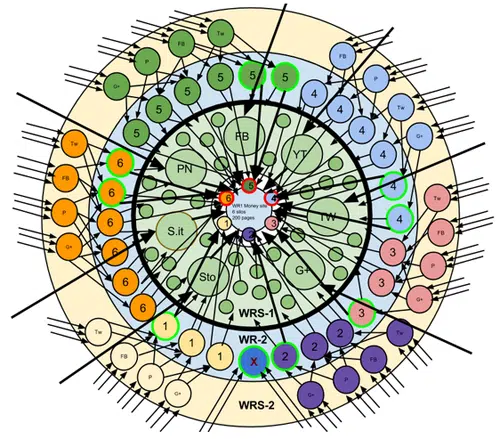
What is a Google Entity Stack and Why Build a Google Stack in the Google Cloud?
Those are great questions from users. Well, let’s apply the information from above including the definition of what a “stack” or Google stack is, and then also apply some rational logic from the perspective of Google and Googlebot. All of the properties in a Google Drive Asset Stack are Google-owned properties and Google loves Google. It’s just a fact. But in all well-intentioned efforts, a brand should be filling these Google-owned properties with quality, relevant, people-first content and branded content like the company name, address, phone, website, services, etc. In essence, these properties all score 100 out of 100 on the authority scale from big G’s perspective. Push relevant content into these assets with some strategy behind it and I think you will come to see why these are a valuable option for a sound SEO strategy.
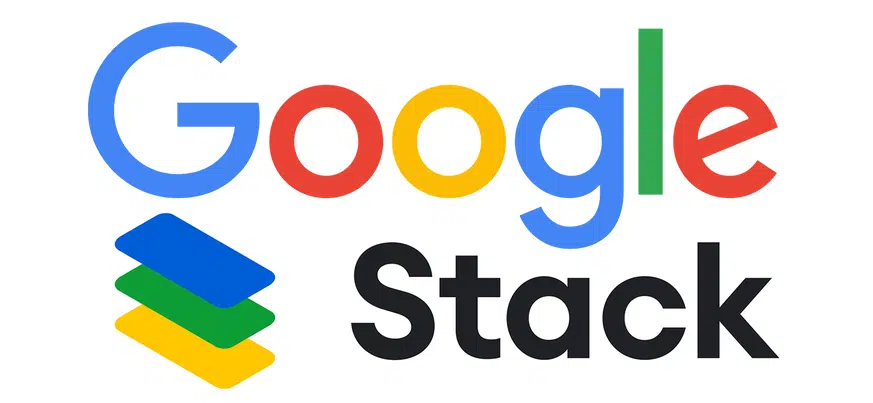
Getting a GMB listing and a web page into page one of the SERPs is typically done (building up the domain authority of a company) with content, signals (especially mobile device signals), and links to sites that are relevant in their industry and using SEO best practices on articles, blog posts, and so forth. Building domain authority and entity authority is an entire topic unto itself but these are the core drivers of rankings in the SERPS for money keywords as long as you have your entity and domain + page relevancy nailed through great technical on-page SEO strategies and best practices.
Building a branded set of enterprise Google entities or Google app properties for a brand/entity, injected with highly relevant, optimized content and then weaving those different resources into your linking strategy is a very powerful way to build entity authority and online or digital brand equity. We typically start with Google Sites as the parent in the Google drive stack. Everything else in the Google stack links to/from the Google site and all of the Google assets are embedded into the Google site. Another great asset to include is the Google Business Profile (GBP) site with the embedded Google reviews on it directly inside the Google site. The review link juice inside the Google site is very effective. This can be looked at as a Google PBN if you want to classify it in a different way.
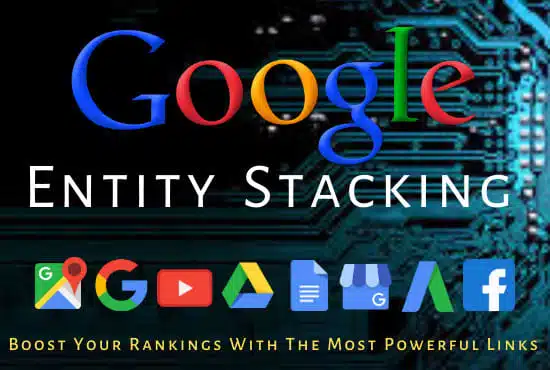
Ranking Search Results Based on Entity Signals
Ranking Search Results Based On Entity Metrics is the title of a Google patent granted in 2015. Building a Google Asset Stack for a target entity ties these two themes together in many ways. But this is the point. Google is looking at an entity and measuring over 200 data points at the brand entity level.
In this post, I will give a brief overview of our process for creating an “official” Google Asset Stack tailored for SEO purposes and why this can greatly help with building domain authority and entity authority.
What is Google Stacking?
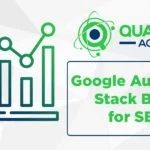
Google stacking is a technique used to improve search engine rankings. A Google Stack is a collection of Google entities or apps like Google Sites, Docs, Calendar, MyMap, Draw, Photos, Sheets, Forms, and Slides containing company information which are ‘stacked‘ on top of each other (so to speak) and made public, taking full advantage of the Google properties and the authority they have within Google’s ecosystem and algorithms.
What is Google stacking in SEO?

Google Stacking is an authoritative SEO strategy that allows you to build links on several Google platforms to other entity assets like the company’s website. These “Google Entities” include content in assets like Google Drive, Sites, Docs, Google Sheets, Google MyMap, Youtube, Photos, Draw and more. Google indexes content on it’s own domains/assets very quickly as well. A branded search query result may very well include some to many of these Google assets fairly quickly.
Why Are Google Entity Stacks Referred to as Google Drive Stacks or Google Cloud Stacks?
Some people in the search optimization community call Google Entity Stacks a Google Cloud Stack and/or a Google Drive Stack. These are simply different names for a collection of Google entities that are created around a brand or company as part of the overall web presence strategy for that entity. Some people refer to these as Google Cloud stacks since all of these Google entities reside in the Google Cloud from a hosting perspective. Also, since Google Drive is one of the main entities created in a Google entity or asset stack, some folks might just refer to these as Google Drive stacks.
Where can I find more information on google stacking?
This blog post has a wealth of information on the topic directly. If you need additional information, consider ordering a Google stack product from Quantum Agency here.
Where is google stacking most commonly used?
There is no definitive answer to this question as it depends on a variety of factors, such as the type of business, the size of the company, the geographical location, etc. However, some SEO experts believe that google stacking is most commonly used in the United States, followed by the United Kingdom, Canada, and Australia. More specifically, google stacking is typically used to build authority around a brand or entity for the purposes of expanding an entity’s web presence and visibility in search.
How can I use google stacking to improve my search results?
Once you have a complete Google asset stack created in a public Google Drive folder, you can begin to start using the different Google apps or assets in your content and linking strategy. The more relevant content you can create and push into your different Google assets the better. Add links in the Google site and other Google cloud apps to your main website pages (again think relevancy) and also link to your Google assets from other pages and social media accounts, etc.
Google Stacking: How to Optimize Your Site for Google’s Top Rankings
2 Steps on How to Stack Authoritative Google Properties To Drive Local SEO Signals to Authoritative Brand Assets
STEP ONE: Build/create your Google Drive Stack
The first step we take to build a Google entity stack is to secure a branded Gmail account for the company/entity we are going to build this for. We will use the Gmail account to create all of the other Google properties in the Google developers stack. This Gmail account is the “owner” of the stack properties or accounts. It can be shared with a client or not but this is the first step in a new Google asset stack.
We always aim to get an exact branded Gmail if possible. This is done to ensure that everything in the stack has a consistent and uniform brand message. A Google Workspace account is even better from Google’s standpoint. They actually want to see a Workspace account tied to a company domain in their API applications.
A Google Authority Stack is a collection of Google apps like Docs, Calendar, Sheets, Forms, Photos, Draw, MyMap, Site and Slides containing company information which are ‘stacked’ on top of each other (so to speak) and made public, taking full advantage of the Google app properties and their related authority.

A Google Authority Stack is also known by many other names such as a Google Stack, a Domain Authority Stack, a Google Cloud Stack, a Google Technology Stack, a Google Entity Stack, a Google Property Stack, a Google Drive Stack, a Local Authority Stack, a Google Site Stack, Google Asset Stack, or a Domain Stack, depending on the elements and entities used in your SEO and advertising strategy.

If you are looking to build your brand with organic authority, the 10+ high-authority Google assets being described on this page are exactly what you need. By leveraging any of your own proprietary tactics for using those assets, such as building backlinks from other sites, sources like Quantum Newswire, or using social signals to generate traffic signals, the power of these assets will only multiply which is what leads us to step #2. You will need 1000-2000 words of optimized content in different forms for the different parts of the stack (ie. docs, slides, sheets, photos, youtube) to power it up.
STEP TWO: Power up your Google Cloud stack
Power it up with an initial package of content to build out these different properties and then feed them regular monthly content, backlinks, traffic, and other signals to really push the envelope on building brand entity authority.
These signals (ie. metrics) will be found and you can underpin your efforts by using a good indexing tool. The most important thing to do is to maintain the quality and frequency of your content – I call it content velocity. Another topic for another day but content velocity matters when it comes to more competitive niches and geo-markets.
Your brand messaging needs to be consistent and trusted across all your digital properties if you want to establish yourself as a brand to be reckoned with in the eyes of Google. Use the Google asset stack in your content linking strategy, regularly. Push new content into your Google stack as well, regularly (content velocity). Find ways to automate this using tools like IFTTT and you can connect other highly authoritative blogs and profiles into your content syndication strategy for signal generation.
For more GMB signals, use your GMB CID and PID links in your Google authority stacking strategies. Embed a Google MyMap into your Google site and your target site too. Embed Google post images into the Quantum Newswire press release engine for more GMB signals. Use zip codes you want to rank for as hashtags. There are so many ways to generate powerful brand/entity signals or metrics that Google will find, crawl, render and score in its algorithm.
You can certainly get going and build these Google Asset Stacks on your own and start using them in different ways. The fun part is experimenting with these and watching the movement in the SERPS and in your analytic tools like Google Search Console and Google Analytics. The key is to build them, power them up with content regularly and then build links to them and the various areas of content that you inject into the stack.
Want the Easy Button for Building Your Google Drive Stacks?
If you want to skip the manual work and the years of learning the best strategies in execution, you can outsource the entire process to us.

Quantum Agency will create a custom local authority stack for your agency or client accounts with 10+ Google entities covering your NAP, citations, backlinks, services, and social media accounts, all made public and shared with your branded Gmail. It’s a full-service white label SEO product.
We can customize your authority stack based on whether you want local search rankings, organic rankings, or both. All the Google elements come together in a very well-constructed Google Site.
Our writing team creates over 1500 words of optimized relevant content for each stack. We create an interlinked public Google Drive stack and use those elements in the creation of a multi-page Google Site that links to the target Google apps, entity or asset page(s). The site links are complemented by Amazon S3 and Google Cloud HTML links.
Sometimes, the Google site can even outrank the page it is linking to. This excess link equity helps your other pages rank better and you should take advantage of this by investing in a Google Asset Stack today.
GET YOUR GOOGLE ASSET STACKS HERE
